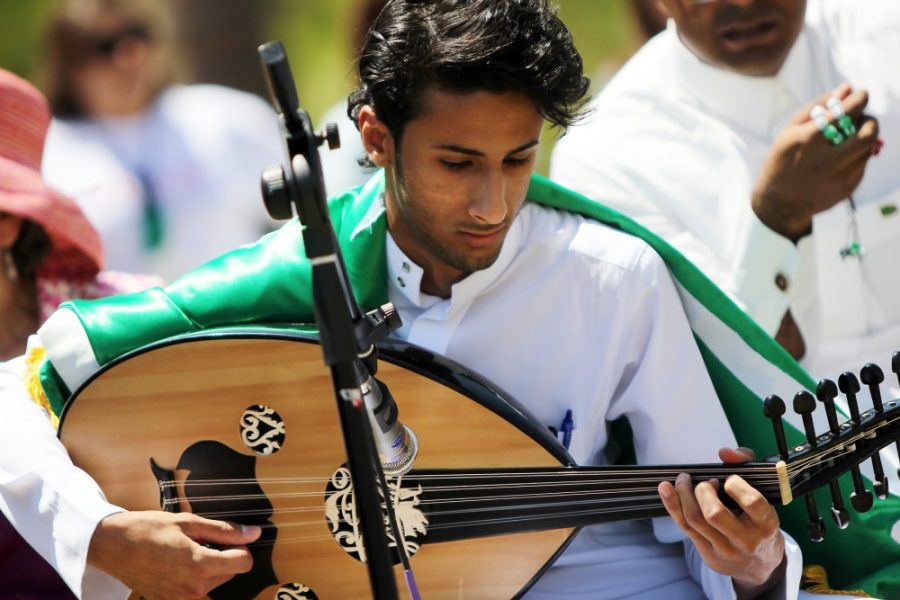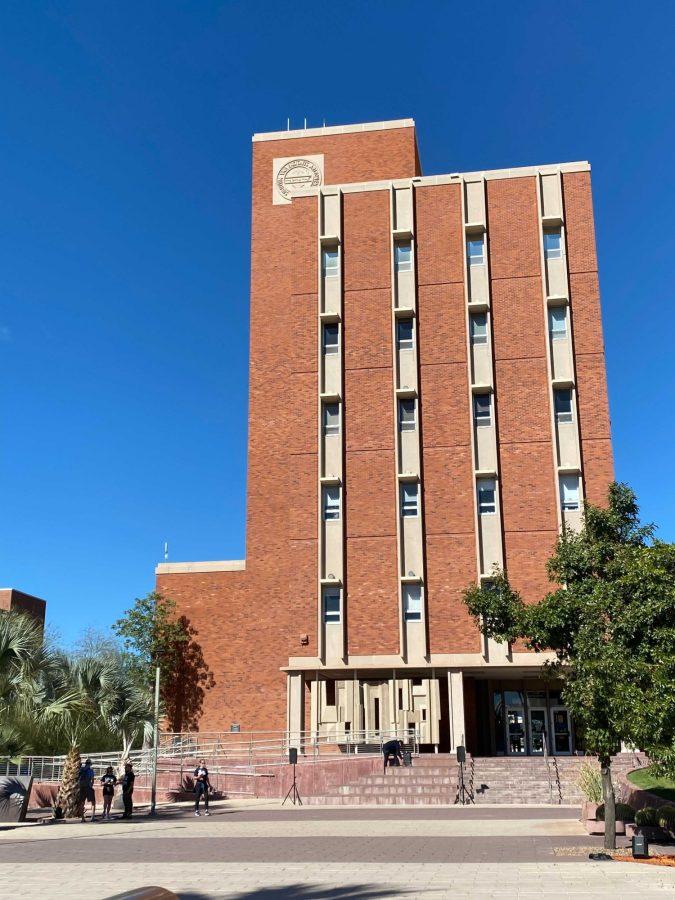A festival celebrating cultures from around the world was held on the UA Mall on Wednesday.
The International Festival is put on annually in order to give the international students of the Center for English as a Second Language a chance to educate the community on their native countries’ cultures, said Fernanda Ortiz, curriculum coordinator at CESL.
Participation in the festival gives students a chance to wear traditional clothing from their country, Ortiz said, and children from local elementary schools often attend to learn about international cultures.
The festival takes about two to three weeks to set up, and instructors help their students to prepare information for the public, Ortiz added.
Jeremy Lee, student activities coordinator at CESL, said that the International Festival has been taking place annually for around 30 years and represents more than 30 countries.
The International Festival gives the students at CESL a chance to showcase their cultures for UA students and to be with their fellow countrymen, according to Lee. Many of the CESL students Lee works with have only been in the U.S. for a few months.
“[CESL students] are somewhat sheltered, still,” Lee said. “This is a nice opportunity for them to get to know people and spread their culture.”
Lee said that one change this year was that the women of CESL from Saudi Arabia had their own table, because men and women tend to be very separate in Saudi Arabian culture, and that the men’s voices sometimes overpower the women’s.
Lee said he hoped that the Saudi Arabian women would feel more comfortable representing their contributions to Saudi Arabian culture this year.
At the festival, which ran from 10 a.m. to 3 p.m., students decorated tables with flags, foods and art from their native countries. Some played musical instruments, while others sang their countries’ national songs. Some countries, such as Saudi Arabia, were represented by dozens of students, while other countries, like Costa Rica, had just a few representatives.
CESL student Talita Duarte was one of the representatives of Brazil. The country’s table featured video of Carnival, photographs and a memory game to teach Portuguese phrases and important places in Brazil. Duarte said that she enjoyed preparing for the festival.
“It’s nice because we just show the beautiful things of Brazil,” Duarte said.
Dania Xavier, a CESL student from Angola, performed dances with her fellow Angolans throughout the day. Their table was decorated with traditional fabric from the African country, the Angolan flag, traditional art pieces and local foods.
Xavier said the festival experience was very interesting, because most people she spoke with — both CESL and UA students — didn’t know where Angola was, so she felt that she was helping to educate her fellow classmates.
“I feel that next time they hear someone say, ‘I am from Angola,’ they will remember us and say, ‘I know that place,’” Xavier said.
Follow Hannah Plotkin @HannahPlotkin









